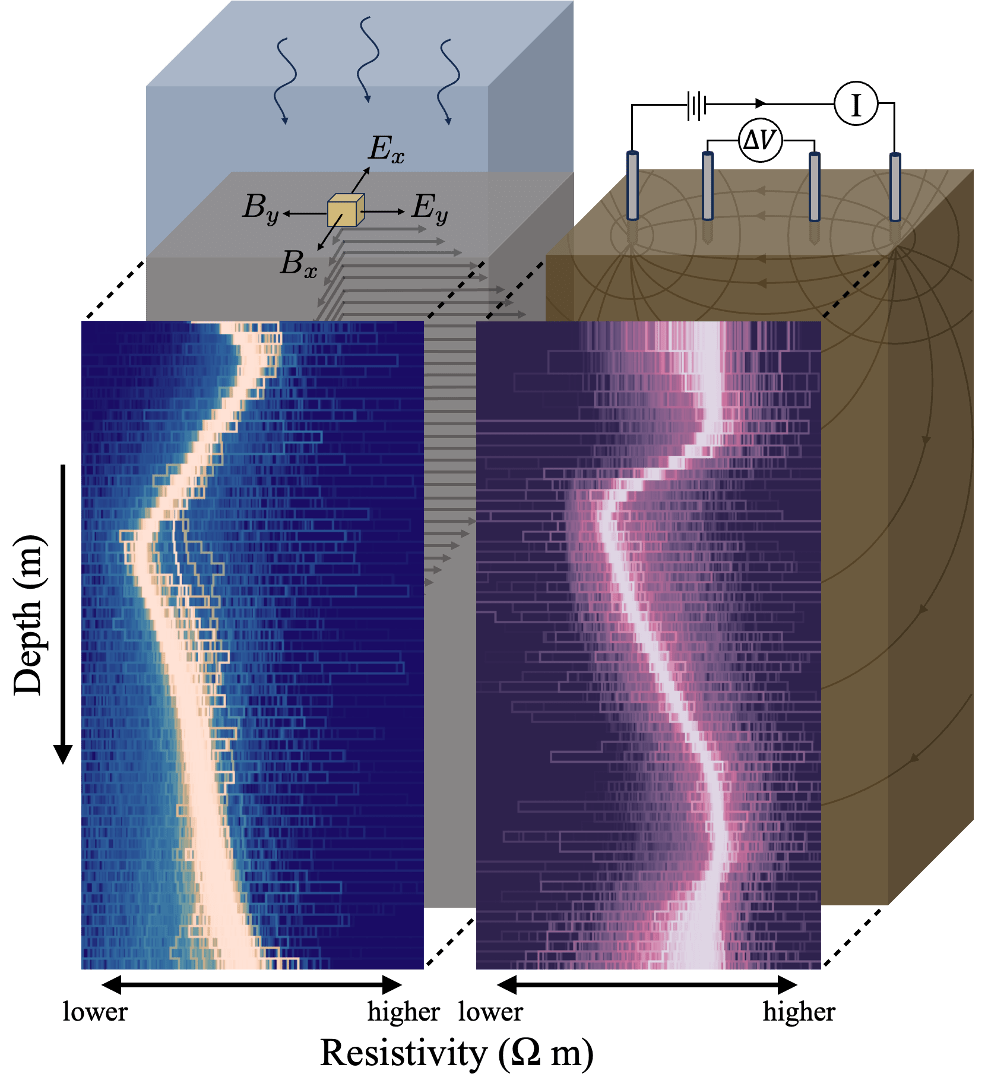14:00 at NERSC Copernicus lecture room.
Talk by Kristian Fossum (NORCE).
Abstract
In geosciences, accurately quantifying the uncertainty in subsurface models is a challenging yet critical task. Traditional methods have typically adopted a single-scenario approach, relying on a single model populated with uncertain parameters to predict underground dynamics. This approach neglects many uncertainties inherent to the subsurface models, including those that are difficult to parameterize, such as different geological interpretations. Hierarchical Bayesian methods can address some of these concerns, yet they are hampered by high computational costs, limiting their practical application.
Our study introduces a novel approach to subsurface uncertainty quantification by including multiple model scenarios. This method leverages recent advancements in Bayesian model comparison (BMC) to provide a better assessment of subsurface uncertainties. By examining a variety of scenarios, our approach uses BMC to rank the scenarios based on data and provide weighted averages of the forecast when no single scenario is deemed superior. The ultimate objective is to create a more robust and credible forecast of subsurface behaviour.
This research builds upon the groundwork laid by two recent studies. The first (Aanonsen, S. I., Fossum, K., \& Mannseth, T. (2023), “Bayesian model evaluation for multiple scenarios”, \emph{Computational Geosciences}) introduced an enhanced BMC method known as modified Bayesian stacking (BS), which proved to be faster and more resilient compared to traditional methods, particularly in complex, high-dimensional situations. However, this method still necessitates calculating the Bayesian Model Evidence (BME), a computationally intensive task. The second study (Mannseth, T., Aanonsen, S. I., \& Fossum, K. (2024), “Calculating Bayesian model evidence for porous-media flow using a multilevel estimator”, \emph{under review for the Journal of Computational Physics}) proposed a multilevel estimator for BME, aiming to significantly reduce computational demands by incorporating simulations at various fidelity levels, thus facilitating BME calculation within realistic computational constraints.
Applying these innovations, our study evaluates several scenarios for the Norne field model. We consider uncertainties that are challenging to parameterize as well as cases where a scenario evaluation is deemed to be more efficient. By integrating the modified BS approach with the multilevel estimation of BME, we can efficiently evaluate scenarios on realistic models. This blend of methodologies enables an efficient framework for uncertainty analysis in geoscience, marking a significant step forward in achieving more reliable subsurface modelling. This paper presents a groundbreaking approach to subsurface uncertainty analysis, combining recent advancements in Bayesian model comparison and multilevel BME estimation to enhance the reliability of geoscientific forecasts.




